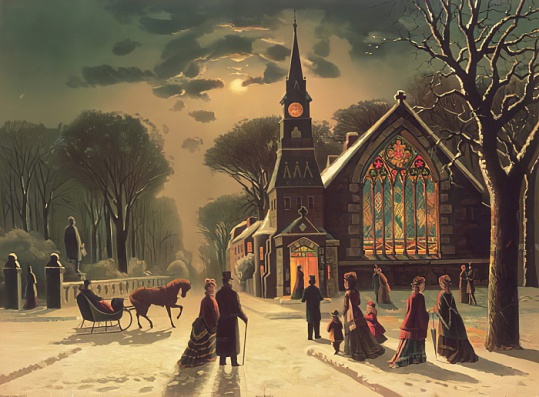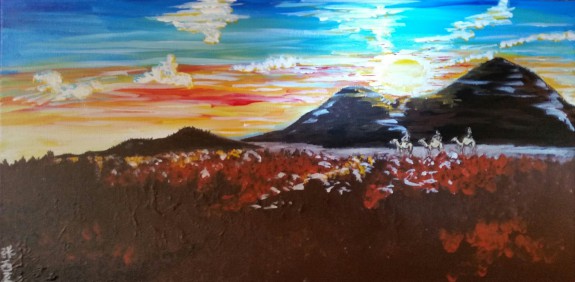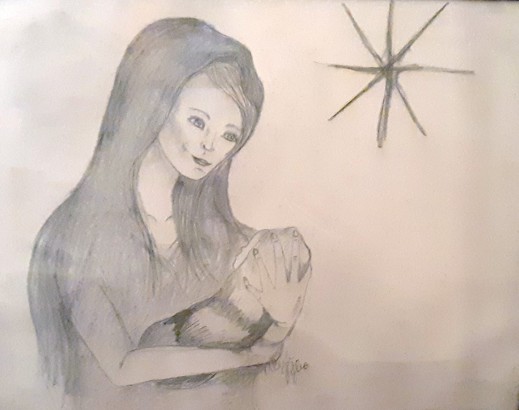
December 2019
December 27, 2019
Art Image Resource
One of the first things that I learned in seminary was that the worst sin in academia, and in church speeches, sermons and publications, was that of plagiarism. That initial introduction to the protection of another’s property or creation has stayed with me throughout the years. As I have worked to bring the arts into the life of my church, I have been diligent about continuing to be aware of copyrights and about protecting them.
When I discovered that even showing a clip of a film in an education class, not to mention showing a full movie on a cinema night, required the purchase of a license, I researched it and have renewed our license for such uses for many years now. When we began our annual performance series, my artistic director researched the details of copyright and royalties, and for the ten years of our series we have paid annual fees, and submitted quarterly reports, to ASCAP, so that composers receive the royalties that they are due.
The one area where I have been uncertain of how to proceed has been in visual arts, including photography. I have not wanted to violate copyrights, and so I have limited visual arts on this website, and on my church website, to either works of art such as I have highlighted in recent weeks (for which I have received permission from the artist to publish images of those works), or to my own photographs.
It was thus a pleasant surprise, when I recently subscribed to a daily email from “Christian Art Today,” to discover that as they share images of artworks they do so using a source for public domain works called Wikimedia Commons. This resource has a vast amount of works to draw from, and while credit should still be noted as to this source, and notated that the work is in the public domain, this allows one to showcase works of art without having to pay royalties of any kind. For a website such as mine, and for the use of artworks in most churches, this is an incredibly valuable opportunity.
If you choose to search through Wikimedia Commons, I hope that you find the prospect for resources to be as intriguing as I do.
December 20, 2019
Artistic Visions of Advent 4
This is the first time that I have used an image of an artwork other than what has been created in our own church. I will talk more about the source next week, but for now I share with you a work from 1878 entitled, “Christmas Eve.”
“Christmas Eve”
Painted by J. Hoover & Son, 1878
Public domain via Wikimedia Commons
There are several ways that one can approach this painting. It is certainly an idealized view of Christmas Eve, with the snow-covered streets and yards, the children dressed as well as the adults, the glow of light from within the church, all of it reflective I imagine of how this holy night was perceived in 1878. It is a vision that may well have graced Christmas cards of the day.
Now if one wants to challenge the precepts of the artists, and even wants to ask where the sense of reality is, at least as we know it in our own day, we might ask where the poor and homeless are on such a night, for surely as Luke tells it Jesus was born in humble surroundings as a foreshadowing of his commitment to the poor and outcasts of society. We might also ask about the absence of those who are dressed in less than their Sunday best, although I imagine that the people of 1878 did try to wear their very best clothes on such an occasion.
But what message can this painting provide to help inform our experience of Christmas in 2019? If we harken back to the words of the prophet Isaiah, from the ninth chapter, where the coming one is referred to as Wonderful Counselor and Prince of Peace, and we celebrate that we accord those titles to Jesus, then can we say that this idealized view from 1878 is indeed a vision of what Christmas Eve might look like if Jesus does indeed reign as Prince of Peace? While it is easy to dismiss such images as this, does it give us a view of how things might truly be with the ushering in of God’s reign?
Not only does the light of the church illuminate the stained-glass windows, but it also glows brightly through the wide-open doors. That indicates the welcome that I believe we want to offer to all, and, on Christmas Eve, may that grace truly be offered to all.
May you have a blessed Christmas.
December 13, 2019
Artistic Visions of Advent 3
One of the things that I have enjoyed about working with our artist is that I have invited her to come and create a work among us as we worship, but I have given her no more guidance than that the creation be related somehow to the story of the birth of Jesus. In each case, Alexi has chosen the subject and the medium. That has been for me a great joy, because I too get to experience the story through fresh eyes, and get to enjoy the discovery of what she has created.
On the second occasion when she joined us in worship to create a work, she painted this amazing view of the journey of the magi.
What I find intriguing about this painting is the several places where one’s eyes can focus, from the brilliant sun, to the striking red steaked across the sky, to the deep, rich brown in the foreground. There is of course also the focus on the three figures riding on camels, but they may not be the first thing that one sees. And that is part of the beauty of the painting, and of the story being told through the painting.
This was a journey for the magi. They no doubt went through many different types of terrain, and experienced many sunrises and sunsets. They were firmly committed to their trek westward. Yet, as the painting implies, they were a part of the bigger picture. When they arrived in Bethlehem, it was not so that others could be amazed at them, but so that they could offer their gifts to the holy family and look with amazement themselves at the child before them. Isn’t that where we hope our Advent journey will lead us?
While you can’t observe it from this view of the painting, the acrylics are also painted on the four sides of the canvas. Immediately after Alexi finished the painting, I suggested that I loved it and wanted to frame it for the church. She said that actually it was meant to be hung without framing, so that the painting is seen to continue beyond just the one surface. So, as I have thus never placed it into a frame, I have spent time reflecting upon the small ways in which it depicts where the magi have come from, and where they are headed. It then can also become a way of viewing what has come before in our own lives, and where we are headed, in this holy season.
December 6, 2019
Artistic Visions of Advent 2
The first time that our artist, Alexi Pyles, created a work during worship in the Advent season was an especially gratifying experience. With the congregation never having done something like this before, and even with a group of wonderful people who are particularly supportive of both creativity and the arts, I was very curious to see how they would respond to this new and unique activity. I invited them, from the very beginning of the worship gathering, to wander back and see her work during the time when carols were being sung, when the moving around would not be disruptive to those who may have questioned the whole effort. And, people responded with genuine interest and admiration.
In our first encounter with this experience, Alexi chose to work in pencil. What she created was a rendering of the Madonna and Child.
What I especially love about this piece is its simplicity. The star is in the background, and gives us a clue to the setting of this intimate depiction of a mother and child. Indeed, without the star, we might see this as just a lovely drawing of a newborn child and an adoring mother. But the presence of the star leaves no doubt that we are here being given a glimpse of Mary and the infant Jesus.
Beyond that, though, our total attention is focused on Mary and the one whom she cradles in her arms. We see a Mary here who has moved beyond the struggles of the journey to Bethlehem, and the pain of childbirth, to one of adoration and devotion toward the young life that she holds in her hands. Her eyes, and her slight smile, are perhaps the most telling, and yet her hands, and especially her left hand that cradles the head of the infant Jesus, also speaks volumes about the love and care that this mother has for this baby.
This drawing evokes for me a sense of the adoration that we all might have, if we choose it.



